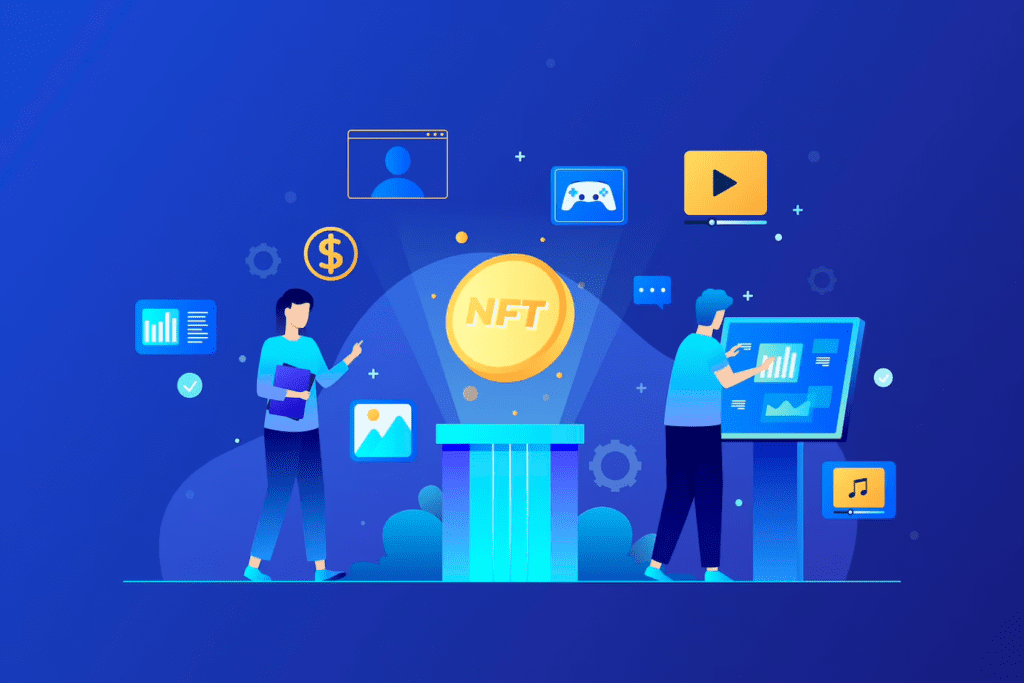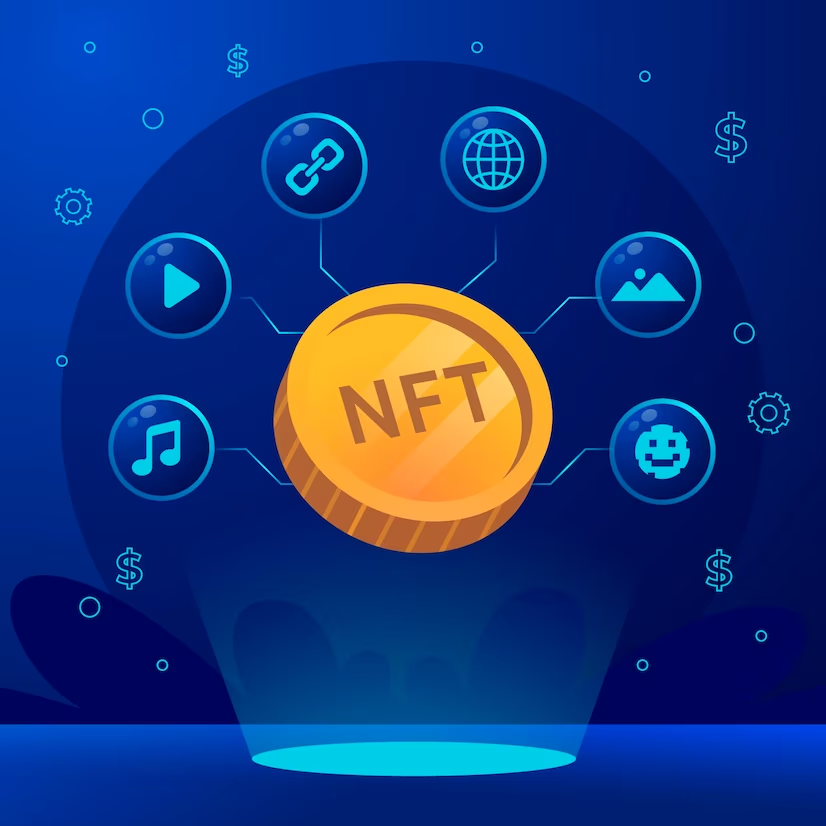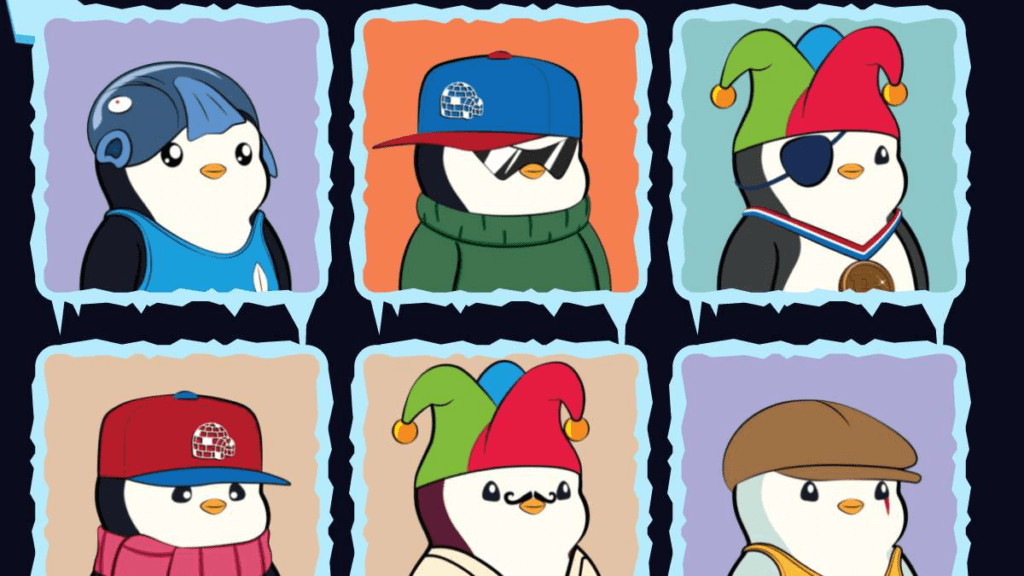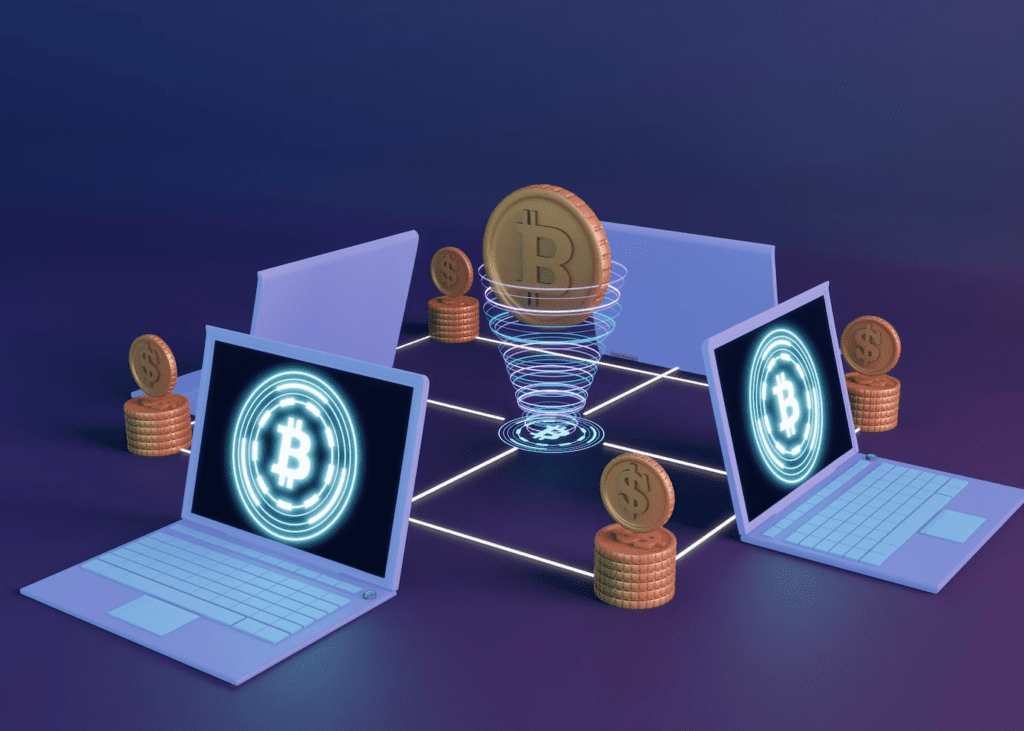Non-fungible Tokens (NFTs) have taken the digital world by storm, providing a new way to buy, sell, and trade unique digital assets such as digital art, virtual land, and digital collectibles. NFTs are digital certificates of ownership stored on a blockchain network, making it easy to prove ownership and track transactions.
This article will cover everything you need to know about NFTs, including what they are, how they work, and their potential uses.
What are NFTs?
NFTs are non-fungible digital assets, meaning they cannot be exchanged for something of the same value. For example, Bitcoin is a fungible asset because one Bitcoin has the same value as another. However, each NFT is unique and represents something different.
NFTs are created using blockchain technology, which is a decentralized public database that records transactions. The most popular blockchain networks used for creating NFTs are the Ethereum blockchain and the Binance Smart Chain.
This article is a segment of a more extensive piece. Read more about What Is NFT.

How do NFTs Work?
NFTs use smart contracts – contracts that automatically execute when certain conditions are met. These contracts are stored on the blockchain network and contain the rules for the creation, sale, and transfer of the NFT.
When an NFT is created, a unique token ID is stored on the blockchain network. This ID is used to identify the NFT and prove ownership. NFTs can be sold, traded, or transferred to other digital wallets like any other cryptocurrency.
What Are the Benefits of NFTs?
NFTs provide many benefits for creators, buyers, and sellers. For creators, NFTs create a new way to monetize their digital content and provide proof of ownership. Buyers can purchase unique digital assets that represent ownership of a specific asset, while sellers can profit from selling their digital goods.
NFTs can also be used for various purposes, such as proving ownership of intellectual property rights, creating unique gaming assets, and tokenizing real-world assets such as sports memorabilia or artwork.
What Are the Different Types of NFTs?

There are several different types of Non-Fungible Tokens, each with its own unique properties and potential uses. Some of the most popular types of NFTs include:
Digital Artwork: Non-Fungible Tokens can be used to buy and sell digital artworks, providing a new way for digital artists to monetize their work.
Virtual Lands: Non-Fungible Tokens can represent ownership of virtual land in virtual worlds such as Decentraland or The Sandbox.
Digital Collectibles: Non-Fungible Tokens can represent valuable collectibles such as trading cards or rare digital items.
In-Game Assets: Non-Fungible Tokens can represent unique assets in video games such as Axie Infinity. This provides a new way for gamers to profit from their in-game achievements, revolutionizing the gaming industry.
Crypto Collectibles: Non-Fungible Tokens can represent unique crypto-collectibles such as the Bored Ape Yacht Club or the Doge meme, providing a new way to invest in cryptocurrencies.
How does the NFT Marketplace Work?
NFT marketplaces are online platforms where users can trade, sell, and buy NFTs. Some of the most popular NFT marketplaces include OpenSea Marketplace, Rarible, and SuperRare. The NFT market allows creators to sell their NFTs and buyers to browse and purchase unique digital assets.
To buy a Non-Fungible Token, users must create a digital wallet compatible with the blockchain network. Once the wallet is made, users can transfer cryptocurrency to their wallet and use it to purchase NFT tokens. The transaction is then recorded on the public blockchain ledger, providing proof of ownership and ensuring the transaction’s authenticity.
NFT marketplaces also offer tools and services to help users create and sell their NFTs. For example, many marketplaces offer built-in auction systems and the ability to set royalty rates so that creators can earn a percentage of future sales of their NFTs.
Some marketplaces also offer curation services, allowing users to discover high-quality NFTs and artists.
NFT Blockchains

NFTs have become an increasingly popular use case for blockchain technology. Here are some of the most notable ones:
Ethereum
Ethereum is currently the most widely used blockchain for creating and trading NFTs. It provides great flexibility and customization, allowing developers to create unique smart contracts and tokens representing a wide range of digital assets.
Binance Smart Chain
Binance Smart Chain is a blockchain platform developed by the cryptocurrency exchange Binance. It is designed to be fast and scalable, making it a popular choice for creating NFTs requiring high transaction throughput.
Flow
Flow is a blockchain platform developed by Dapper Labs, the company behind the popular NBA Shot NFT marketplace. Flow is designed specifically for creating and trading NFTs, providing high scalability and ease of use.
Polkadot
Polkadot is a blockchain platform that allows multiple blockchains to operate in parallel, making it a popular choice for NFT projects that require interoperability with other blockchain networks. Polkadot is also designed to be highly scalable and customizable.
Tezos
Tezos is a blockchain platform that allows for creating smart contracts and decentralized applications. It is designed to be highly scalable and secure, making it a popular choice for NFT projects requiring high security and reliability.
Cardano
Cardano is a blockchain platform that uses a unique proof-of-stake consensus mechanism designed to be highly energy-efficient. It is also highly scalable and customizable, making it a popular choice for NFT projects requiring high flexibility and efficiency.
These are just a few examples of the many successful NFT blockchains. As the NFT market continues to grow, we will likely see the development of new and innovative blockchain platforms specifically designed to meet the unique needs of the NFT ecosystem.
Crypto Wallet

Crypto wallets, or digital wallets, are software applications that allow users to securely store, send, and receive digital assets such as cryptocurrencies, including those used for purchasing NFTs. These wallets use encryption technology to secure the private keys to access the user’s digital asset.
Crypto wallets can be divided into two main types: Hot and Cold. Hot wallets are connected to the internet and can be accessed from anywhere, while cold wallets are offline and offer a higher level of security but are less convenient to use.
Hot Wallets
One popular type of hot wallet is the desktop wallet, a software application that can be installed on a computer. Examples of desktop wallets include Exodus and Atomic Wallet. Another type of hot wallet is the mobile wallet, an app that can be installed on a smartphone. Examples of mobile wallets include Trust Wallet and Coinbase Wallet.
Cold Wallets
On the other hand, cold wallets are hardware devices that are not connected to the internet and are, therefore, less vulnerable to hacking attempts. Examples of cold wallets include Ledger Nano and Trezor.
When purchasing NFTs, it is essential to use a wallet compatible with the blockchain network used to create the NFT. For example, if the NFT is built on the Ethereum blockchain, then a wallet compatible with Ethereum, such as MyEtherWallet or MetaMask, would be required.
In addition to storing digital assets, many crypto wallets provide additional features such as exchanging cryptocurrencies, tracking portfolio performance, and viewing transaction history. Some wallets also offer integration with NFT marketplaces, making it easier for users to purchase and sell NFTs directly from their wallets.
Overall, crypto wallets play a crucial role in the NFT ecosystem by providing a secure and convenient way for users to manage their digital assets and participate in purchasing and selling NFTs.
Security Tokens
Security tokens are digital assets that represent ownership of real-world assets, such as stocks, bonds, or real estate. These tokens are built on blockchain technology and are regulated by securities laws, making them a more secure investment option.
One use case for security tokens is in art, where they can represent ownership of physical or digital art pieces, like NFTs. By owning a security token, investors can gain exposure to these assets without owning the physical artwork.
To own a security token, users can purchase them on a crypto exchange using different tokens, such as Bitcoin or Ethereum. Once the tokens are exchanged, users will receive a digital certificate representing their ownership of the security token.
Smart contracts govern security tokens, self-executing contracts with the terms of the agreement between buyer and seller being directly written into the lines of code. These smart contracts can enforce ownership rules and govern how the security token is traded on the global market.
Utility Tokens
Utility tokens, on the other hand, are a type of cryptocurrency that provides access to a product or service. They are not designed to be investments but to facilitate transactions within a particular ecosystem.
For example, some gaming platforms have created utility tokens that can be used to purchase in-game items or access specific features in a video game.
While security and utility tokens are different, they both play an essential role in the crypto ecosystem. As computers worldwide become more connected, these tokens will continue to offer unique ways for investors to spend money and own assets in the digital world.
Successful NFTs in the Market
There have been many successful NFTs sold over the past year, with some selling for millions of dollars. Here are a few examples:
Beeple’s “The First 5000 Days”

In March 2021, digital artist Beeple sold a single NFT containing a collection of his digital artworks for a whopping 69 million dollars at Christie’s auction house. This was a landmark moment for Non-Fungible Tokens, as it represented the first time a major auction house had sold a purely digital artwork as an NFT.
CryptoPunks

These pixelated digital characters, created by software developers Matt Hall and John Watkinson, have become one of the most popular NFTs on the market. Each CryptoPunk is unique and has its own set of attributes, such as hair color and accessories. In March 2021, a single CryptoPunk sold for 69 million dollars at Christie’s, and the total value of all CryptoPunks in circulation is now worth over 2 billion dollars.
Bored Ape Yacht Club

This NFT collection features 10,000 unique digital apes, each with attributes and personality traits. The Bored Ape Yacht Club has become a popular online community, with members using their NFTs to access exclusive content and events. In November 2021, a single Bored Ape sold for 24.4 million dollars at Sotheby’s auction house.
NBA Top Shot

This NFT collection features officially licensed NBA highlights, which users can collect and trade. A unique NFT represents each highlight; some of the rarest highlights have sold for six-figure sums. The NBA Top Shot platform has been a massive success, with over 1 billion dollars in sales since its launch in October 2020.
Pudgy Penguins

This collection of 8,888 unique digital penguins has become a popular NFT investment, with some of the rarest penguins selling for hundreds of thousands of dollars. The Pudgy Penguins community has also spawned real-world events like meetups and charity fundraisers.
These are just a few successful NFTs, but many more are out there. As the NFT market grows and evolves, we expect to see more groundbreaking sales and new use cases for this exciting technology.
The Future of NFTs

The NFT market is a dynamic and ever-evolving landscape, continuously giving rise to new and exciting use cases. Among the most projects in this rapidly evolving space are Axie Infinity and NBA Top Shot. Axie Infinity, a captivating blockchain-based game, empowers users to indulge in the collection and trading of virtual creatures, while NBA Top Shot offers the opportunity to acquire and trade digital trading cards featuring renowned NBA players. These platforms have captured the attention of enthusiasts, showcasing the immense potential of NFTs in the realm of virtual asset ownership and trading.
As the popularity of NFTs continues to grow, we’ll likely see even more use cases emerge. Some experts predict that NFTs could represent real-world assets like real estate or even provide proof of ownership for disaster relief efforts. Others see NFTs as a way for creators and artists to take control of their work and profit directly.
The benefits of using NFTs are clear: they provide a way to represent unique digital assets and ensure their authenticity. They also offer creators and artists a new way to monetize their work. However, there are also challenges and concerns associated with the use of NFTs, such as their potential for money laundering and the environmental impact of the blockchain networks.
Overall, NFTs are an exciting and innovative new technology that has the potential to revolutionize the way we think about digital ownership and value. Whether you’re a digital artist, a collector, or simply someone interested in exploring this new world, there are plenty of opportunities to get involved and explore the possibilities of NFTs.

Conclusion
In conclusion, NFTs are becoming increasingly popular among the digital art and collectible community. As a result, it is essential to understand the basics of NFTs. These digital assets provide a unique and innovative way to trade and own NFT, with a smart contract ensuring secure and transparent transactions. NFTs offer endless possibilities for selling and owning virtual real estate and other assets such as music, trading card, image, and sports memorabilia.
Furthermore, the decentralized nature of NFTs and the ability to own Blockchain means that users have complete control of their digital ownership. It is important to remember that non-fungible tokens work differently than the market demand determines other assets and their value. As the global market for NFTs continues to grow, it is essential to stay informed and consider the potential of NFTs for your digital endeavors.